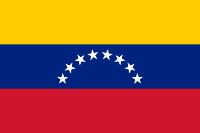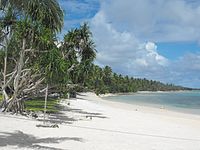
Urban living influences the nesting success of Darwin’s finches in the Galápagos Islands
Sign Up to like & getrecommendations! Published in 2021 at "Ecology and Evolution"
DOI: 10.1002/ece3.7360
Abstract: Abstract Urbanization is expanding worldwide with major consequences for organisms. Anthropogenic factors can reduce the fitness of animals but may have benefits, such as consistent human food availability. Understanding anthropogenic trade‐offs is critical in environments… read more here.
Keywords: gal pagos; success; nesting success; urban living ... See more keywords

7700-year persistence of an isolated, free-living coral assemblage in the Galápagos Islands: a model for coral refugia?
Sign Up to like & getrecommendations! Published in 2020 at "Coral Reefs"
DOI: 10.1007/s00338-020-01935-5
Abstract: In an eastern-Pacific coral assemblage at Devil’s Crown, Galápagos Islands, Ecuador, two coral species, Psammocora stellata and Cycloseris ( Diaseris ) distorta , form dense populations of unattached colonies on sand and rubble substrata. In… read more here.
Keywords: coral assemblage; year persistence; gal pagos; pagos islands ... See more keywords

Agriculture changes soil properties on the Galápagos Islands – two case studies
Sign Up to like & getrecommendations! Published in 2019 at "Soil Research"
DOI: 10.1071/sr18331
Abstract: The Galápagos Islands have faced a huge rise in the number of inhabitants and tourists over recent decades. As a consequence, natural forest vegetation has been converted to arable land to meet the increasing demand… read more here.
Keywords: gal pagos; soil; soil properties; arable plots ... See more keywords

Life Cycle and Host Specificity of the Parasitoid Conura annulifera (Hymenoptera: Chalcididae), a Potential Biological Control Agent of Philornis downsi (Diptera: Muscidae) in the Galápagos Islands
Sign Up to like & getrecommendations! Published in 2017 at "Annals of the Entomological Society of America"
DOI: 10.1093/aesa/saw102
Abstract: Abstract The neotropical parasitoid Conura annulifera (Walker) (Hymenoptera: Chalcididae) is known to parasitize bird-parasitic flies in the genus Philornis (Diptera: Muscidae) including P. downsi (Dodge and Aitken), a species that has invaded the Galápagos islands… read more here.
Keywords: host specificity; gal pagos; pagos islands; philornis ... See more keywords

Effect of topographic complexity on species richness in the Galápagos Islands
Sign Up to like & getrecommendations! Published in 2021 at "Journal of Biogeography"
DOI: 10.1111/jbi.14230
Abstract: The accumulation of species through time has been proposed to have a hump‐shaped relationship on volcanic islands (highest species richness during intermediate stages of an island's lifespan). Change in topographic complexity (TC) of islands over… read more here.
Keywords: topographic complexity; pagos islands; species richness; gal pagos ... See more keywords

Early life history of the middling thread herring (Opisthonema medirastre) in the central Galápagos Islands.
Sign Up to like & getrecommendations! Published in 2022 at "Journal of fish biology"
DOI: 10.1111/jfb.15106
Abstract: We estimated life history parameters of a clupeid forage fish, Opisthonema medirastre, by sampling juveniles over the course of a year in the central region of the Galápagos Islands, Ecuador. We collected 160 juveniles on… read more here.
Keywords: life history; pagos islands; gal pagos; opisthonema medirastre ... See more keywords

Host‐specific associations affect the microbiome of Philornis downsi, an introduced parasite to the Galápagos Islands
Sign Up to like & getrecommendations! Published in 2017 at "Molecular Ecology"
DOI: 10.1111/mec.14219
Abstract: The composition and diversity of bacteria forming the microbiome of parasitic organisms have implications for differential host pathogenicity and host–parasite co‐evolutionary interactions. The microbiome of pathogens can therefore have consequences that are relevant for managing… read more here.
Keywords: philornis downsi; downsi; gal pagos; host ... See more keywords